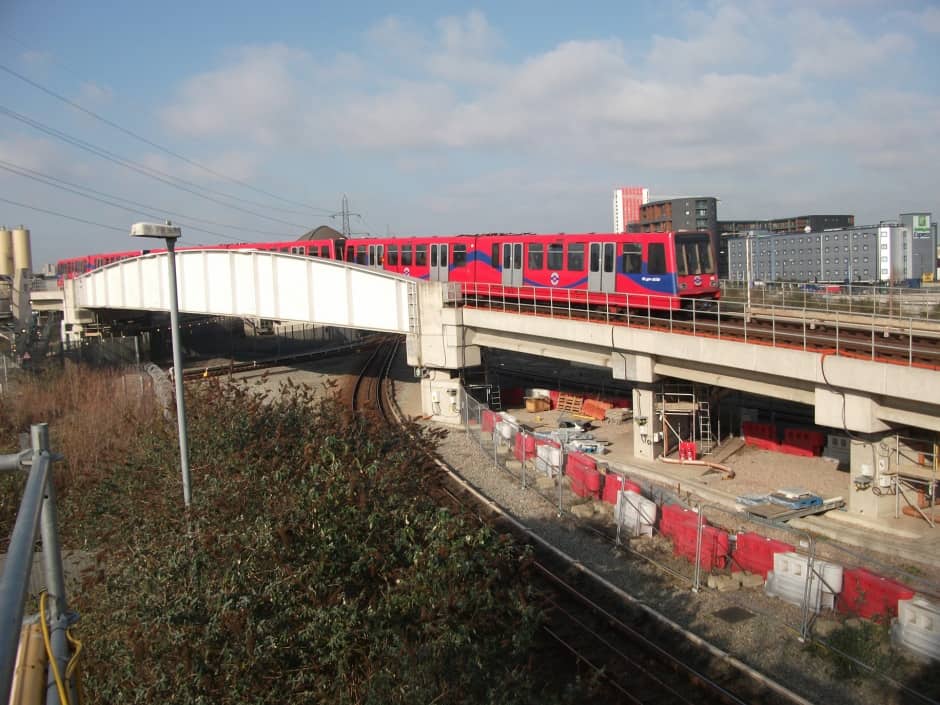 Dave Holland, Engineering Director of Mabey, explains three areas the UK construction sector must focus on to improve its productivity
Dave Holland, Engineering Director of Mabey, explains three areas the UK construction sector must focus on to improve its productivity
For engineers, one of the biggest questions we face today is how we can devise and deliver projects that are more commercially, financially and operationally secure. Efforts to improve efficiency – and therefore productivity – in the construction industry have so far proven difficult, especially in a market defined by low margins, highly complex supply chains, talent shortages and everchanging project timelines.
Change cannot happen if it only comes from the top. Construction is a hard-working machine made up of contractors, subcontractors and suppliers, and collaboration across these areas is vital to achieve the efficiency gains our industry so desperately needs.
In this article, I define three areas – digital technologies, collaboration and skills – as imperative in driving the change we need.
Digital engineering is a must
Perhaps it is in part due to how complex infrastructure projects are becoming, or the comfort we all experience of ‘sticking with what you know’, but the construction industry has been slow to adopt a digital first approach. Yet there are huge productivity benefits to reap by putting down the pen and moving to digital.
Just in the last two years, we’ve seen new technologies enter at a lightning pace. From creating three-dimensional models of live projects, to integrating real-time data from infrastructure monitors into Building Information Modelling (BIM), digital engineering can - and is - transforming the speed, safety and efficiency of construction.
And nowhere has monitoring and real-time data been as crucial than the work going on to keep buildings intact in busy urban spaces whilst tunnelling is going on underneath. We’ve seen this in practice during a current project we’re working on with Dragados, as part of Transport for London’s plans to improve capacity and relieve congestion at Bank Station. Directly beside one of the worksites sits a multi-storey building, with a full glass façade. With the building’s foundations sitting so close to excavation work, even movement of one and a half millimetres could jeopardise the building’s glass exterior.
We worked with Dragados to develop a system to mitigate the risks of the building being damaged and the infrastructure works being brought to a halt. The system ensures that any movement resulting from the tunnelling work will never exceed set parameters thanks to highly accurate, real-time digital monitoring of the height and position of the existing building columns. Vertical movement of the building from activity below ground is controlled by a series of hydraulic jacks, while horizontal movement is managed by electric screw jacks. In the event of even the smallest of movements, a jacking system returns the columns to their original position, indicative of how digital monitoring is being used to increase the safety and efficiency of projects like this.
Promoting collaboration and communication
We often talk of collaboration as the engine of innovation, but do we walk the walk? All contractors and infrastructure clients rely on a broad and deep supply chain of specialist organisations. It is the sharing of ideas across these specialists – whether that is between multiple engineering disciplines, site managers, architects, electricians or welders – which is enabling innovation to happen.
When London’s Crossrail development required a tunnel directly underneath the Canning Town flyover, the works needed to take place safely without causing disruption to the Docklands Light Railway (DLR) service the viaduct carried.

However, working closely with the engineers who developed the original viaduct, it was quickly established that it could only withstand a few millimetres of movement from the tunnelling, presenting a challenge of how to bore one of the largest tunnels in London directly under a sensitive structure.
We corralled a specialist team of over 70 engineers from multiple parties involved in the project, all with a different array of skills – from electronics and geotechnics through to civil and software engineering. It was only by bringing together so many great minds, that we were able to come up with a unique solution which saw the viaduct raised on hydraulic jacks. The structure was monitored in real time to an accuracy of 0.3 millimetres, allowing engineers to respond with any corrective actions via the highly accurate jacking system, ensuring the DLR continued running.
Of course, there is no set formula for collaboration, because every project varies in terms of the personalities and skills of those on board. But by clearly establishing roles and responsibilities from the moment the project starts, receiving early input from every supply chain partner and ensuring regular communication across all teams, solutions can be found, and projects can and will be driven more quickly, safely and efficiently.
Reducing the skills gap
A shortage of skilled workers in the engineering and construction industry continues to be a huge problem. Engineering firms in the UK need to find 182,000 people each year until 2022 to cover retirements and expected growth within the sector. While the challenge is big, it is not unattainable.
Increasing entry-level roles and investing in training and development is a good first step, and something we’re working here at Mabey to address. We need to shake off its ‘dirty, manual’ image and, instead, promote the creative, practical and problem-solving opportunities a career in construction presents.
We are committed to growing the industry and inspiring broader interest in engineering as a career through our Science Technology Engineering and Maths (STEM) ambassador scheme. This includes a new collaboration with LEGO where we are going into primary schools to explain the principles of civil engineering in a more fun and practical way.
It is so important that the engineering and construction industry taps into the minds of young people whilst they are still at school, so that we can dispel myths and inspire interest in the great construction projects happening across the country.
Hand in hand with this comes redressing the gender balance. According to a report by Balfour Beatty, just 13 per cent of the construction sector’s workforce are female[1>, yet another report from Network Rail says that their teams that are more than 20 per cent female are more engaged, safer, collaborative and motivated[2>.
By 2022, Mabey is committed to ensuring at least 30 per cent of its employees are representative of a minority group, and at least 30 per cent of senior managers are female.
Download the full report on improving productivity in construction, including more case studies focused on groundworks engineering and monitoring, here: https://www.mabey.com/uk/campaigns/mqse
[1> Inspiring Change: Attracting women into construction, Balfour Beatty, October 2017
[2> The Engineer, ‘Infrastructure giants set course for diversity’, Jason Ford, 9th October 2017




Swiss geoengineering start-up targets methane removal
No mention whatsoever about the effect of increased methane levels/iron chloride in the ocean on the pH and chemical properties of the ocean - are we...